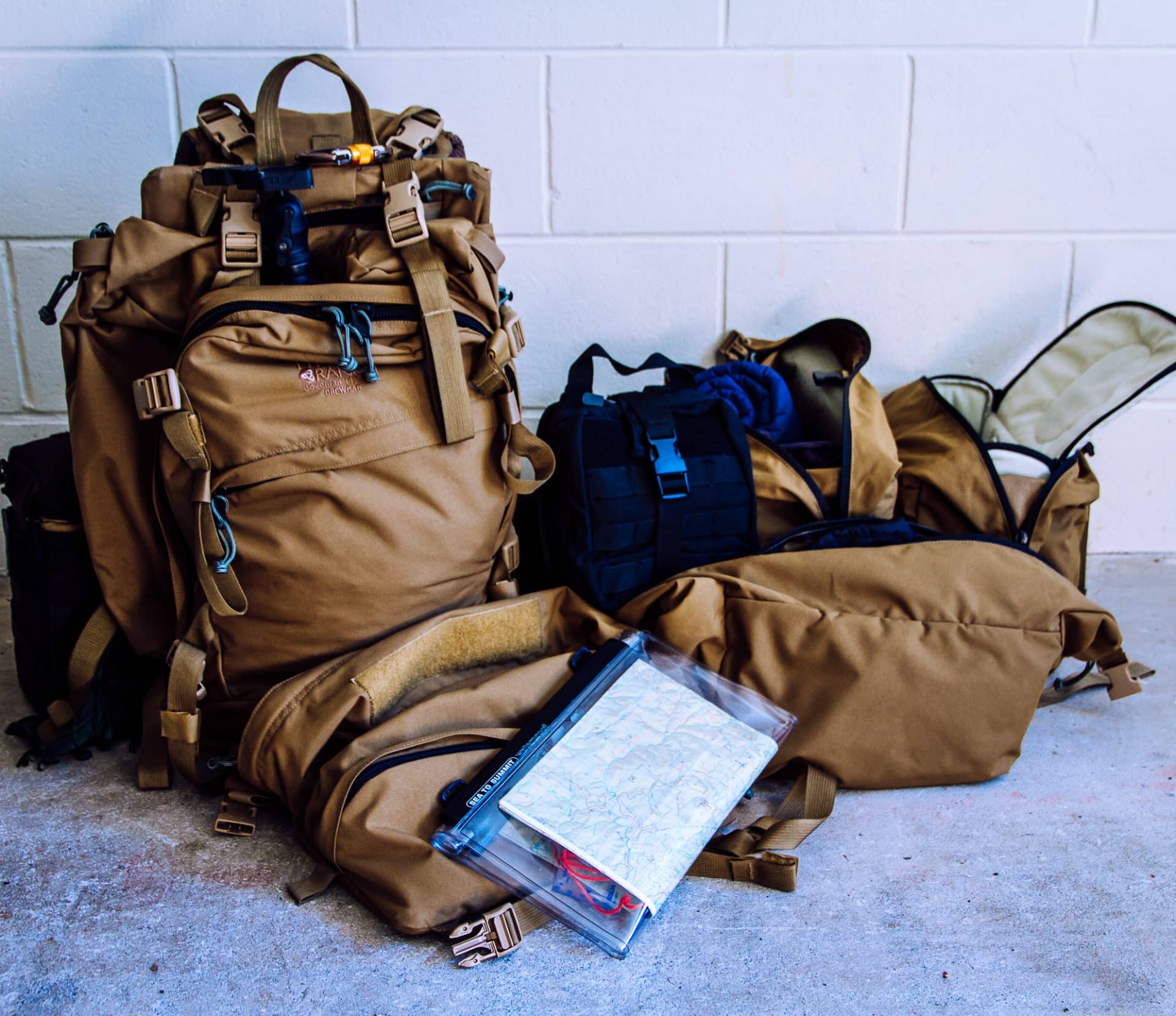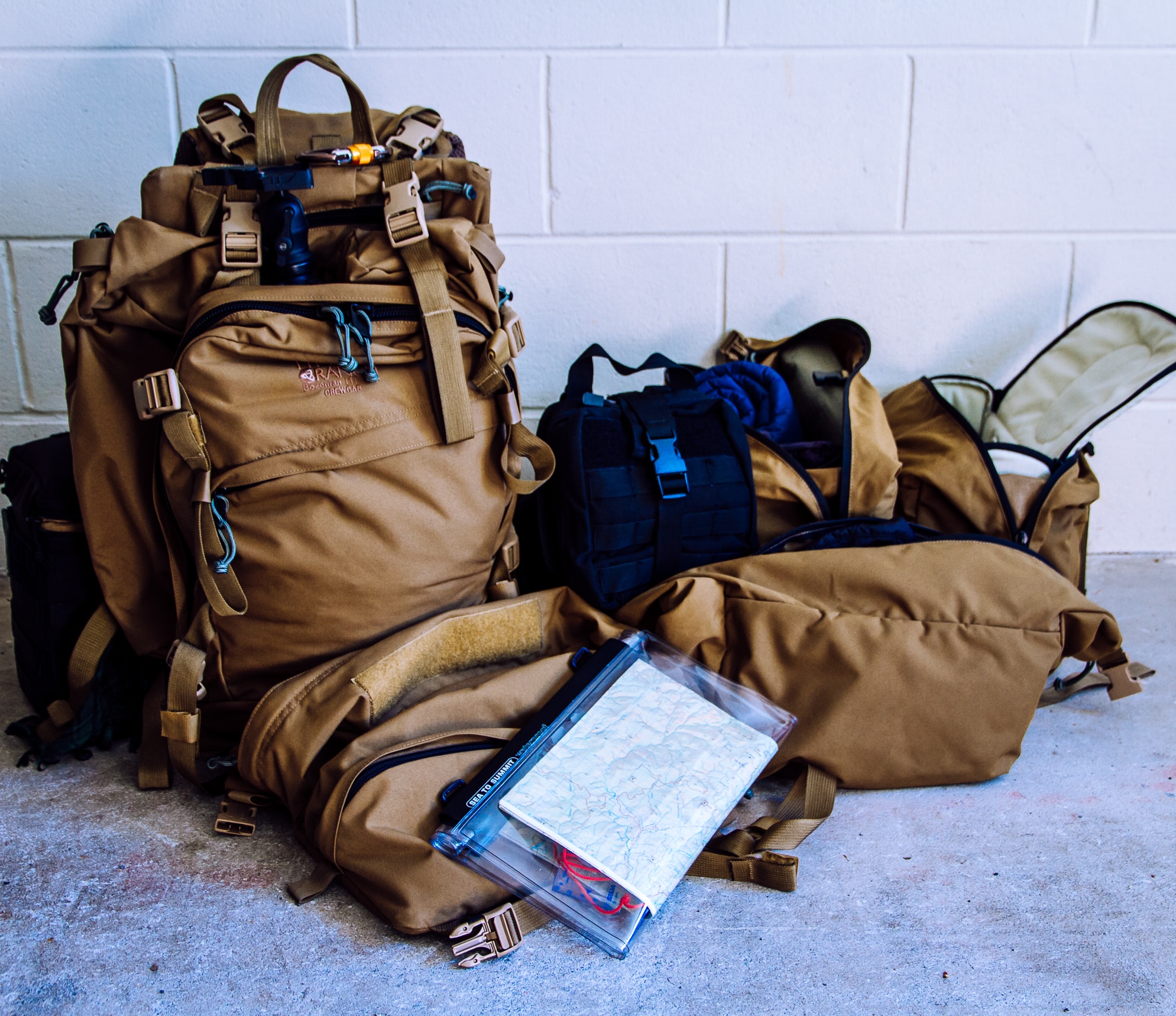One simple fact with tramping – you need to carry everything with you. In, and out. This is how I use my Mystery Ranch Crewcab to hump around all my gear.
Getting back into the bush, I knew I wanted to combine my love of the outdoors, with my photography, but not in a point in shoot kinda, way, more in the, carry huge amounts of weight around with me in case I need that other lens to get the right focal length kind of way.
In addition, my daily commute on a motorbike has lead me to nearly always having a daypack strapped to my back; carrying my waterproofs, basic first aid, a couple of tools, and often, my camera and a lens or two.
And of course, there is my love for all things over engineered and modular.
I purchased a 5.11 72 Rush pack a while ago to serve my daily needs, as well as working as a BOB – it’s a really cool bag, and I already had an MACPAC Cascade 75 pack for backpacking duties, but there were a couple of things that I wanted to improve on.
- The 5.11 is not quite big enough for carrying the kit I wanted to take with me on a multi-day trip.
- Since I am planning on getting into the hunting spirit with the camera – black was not really the right colour for staying unseen in the bush.
- The MACPAC, like most tramping packs, was the traditional ‘one large compartment, top accessed’ – and I really hate having to pull everything out in order to get to things in the pack.
- I liked the idea of a pack that would work as a day pack, overnight or extended trip pack – and could easily add or drop components during the trip.
- Something that could potentially expand into a load carrier for planned hunting trips in the future – i.e. meat hauler.
- I wanted a pack that would fit into my developing Line Carry System.



So I started researching.
Unfortunately, in New Zealand, we don’t get to see/access the massive amount of packs that are actually out there in marketplace. The market seems segmented into camping/tramping, and hunting, and I found that I was leaning towards the hunting side of things a lot more.
I initially was looking at the Eberlestock products, especially the tactical models of the J107M Dragonfly and J51 Warhammer.
I liked these systems because they incorporated modular load carrying – a base pack that could take cells to expand and sort your equipment. In addition, top packs that could convert into lightweight hip-packs appealed to me. They would enable me to dump my pack and only carry the essentials when I need to either go bush or was off for a day/short trip from base camp.
After reading up as much as I could online, trying to get a good idea of what they would provide, I also ended up at the Mystery Ranch Site – checking out the Mystery Ranch NICE Frame compatible packs. These had one thing that I really liked the idea of – a more robust ‘hybrid’ external frame system.
In the end, and after a lot of going back and forth between the websites and any other resource I could find, I settled on the Mystery Ranch Crewcab Pack, filled with Load Cells and topped with the Daypack Lid. Colour was the second challenge – and I settled on good old Coyote Brown – as a potential base for custom painting the pack into Camouflage later.
Mystery Ranch primarily deal through an online storefront, and after putting through the order, I was amazed when the pack turned up within a week! I was a happy camper – as it meant I got to take the pack out on a planned 2-day trip – which I really wasn’t expecting the pack to be available for.
With any system like this, it takes a while for everything to find it’s place, but I am enjoying the process of refining and solidifying what goes where. This article is really to focus on how I am packing it, as much as being a review of the pack itself. No, no ‘unboxing’ – but a pile of my thoughts on how it works with my carry system.
I cover my overall philosophy of my carry system in another article. But this article is going to focus specifically on Line 3 – the equipment that lets you stay out longer – overnight, or multiple days.
The debate of internal vs. external frame is as much fashion as it is practicality these days – with most tramping and alpine packs currently in the internal pack flavour.
However, many people will attest that the way to carry serious amounts of weight is with an external, and one group that would know this better than any else would be the military.
While many would consider these packs to be over designed, over-engineered, and therefore overweight, they are also built to not give up, even when carrying stupid amounts of kit.
Considering I am planning on potentially carrying cameras, multiple lenses, tripods, dolly rails and all the associated equipment, I thought this was a good avenue to explore.

The Crewcab Pack and NICE Frame
The heart of the system.
Sitting on the Mystery Ranch NICE Frame the Crewcab Pack forms the basis of a modular load carrying rig. It folds down to form an excellent (albeit, over the top) day pack for the motorbike and expands depending on how much more gear I want to strap to it. Mystery Ranch says it will happily support up to 120 pounds (54.5 kg) – though I personally hope I never have to test that out.
In its simplest form, it provides a couple of admin/small pockets on the back, with 2 sides loaded larger pockets and a ‘semi-hidden’ hydration pocket between the pack and the frame. These carry the every-day essentials – think of it as a mini bug out bag. A couple of tools, some cordage, water purification options, pens, maps and the like. This is the form I tend to have it in during the week, adding on specialised MOLLE pouches depending on what I am up to for the day (more on those later).
So. Say I am heading out for the weekend. Then the modular aspect of this pack comes into play.
The side pockets are filled up with my Huntech Gaiters and Boonie Hat on one side, pack cover and poncho on the other. If I am taking out the 400mm lens for the camera, this goes in one side as well.
In the hydration pouch, I carry my ‘spare’ water – normally a litre or so. My daily water usage comes from the Nagelene Bottle on my hip – which I fill at any opportunity using the Steripen in the pack. Most places I head too are near water of some kind, so it’s no major to top up as I go.
The first thing to generally go in is my ‘sleep’ cell. This is a large Load Cell packed with my sleeping bag, pad, ground sheet and pillow. While I imagine that the pad will eventually be replaced with an under quilt (I recently acquired a Blackbird Hammock), for the moment, this cell essentially provides a comfortable sleep. Secondly, a Small Load Cell loaded up with cooking, food, and spare clothes. This cell obviously varies a lot depending on how long I plan to be out, but thanks to experimentation with a dehydrator, I am finding food weight can be greatly reduced by drawing all the water out before packing, and adding back in from local sources once I get to my destination. The third and optional cell carries additional food, or photography equipment, depending what exactly I am up too. If I don’t need it, then this cell can stay at home – and the strapping system on the Crew Cab simply tightens up around what I have in there.
The hip belt is covered in MOLLE Webbing, on which I have strapped a Hazard 4 Front Observer Pack & Jellyroll, that carries the Canon 7D SLR, some basic accessories, and generally, a 50mm f1.4 lens and some Kenko Extension tubes. In addition, I have a Condor Rip Away EMT Pouch that carries my extended first aid kit.On top of all this, sits my shelter pack – which is a Mystery Ranch Daypack Lid containing either a single tarp and hammock, double tarp (if I am travelling with my partner) and various pegs, ropes and additional cordage. Again, this varies depending on what I am up too, and the pack itself can also be used as a lightweight daypack to supplement my 2nd Line carry, should I need it.
Mystery Ranch Colours
In the end, I decided to base the system on Coyote Brown. After considering the options for way too long, I came to the conclusion that the brown would form the best basis for my system long term.
I plan on custom painting it with the Krylon range of paints at some point – modelling it on the ATACS FG pattern. Most of my time will be spent in or around the New Zealand Bush, which generally, is a deeply green environment, underpinned with the brown of trunks and dirt.
While the additional pouches are currently black (from my original 72 Rush BOB), the plan is to swap them out soon for matching brown.
The real beauty of this system comes to light when I get to base camp.
I can unload my shelter, sleep and food cell, revert the backpack back to ‘day’ mode – and I now have a way to carry my camera equipment for the day, while leaving anything unnecessary at camp. If I want to go even lighter – I can take out the straps built into the Daypack Lid, load what I need into there, and have a small backpack to wear over my 2nd Line Survival Pack (Ribz Frontpack) which stays with me regardless of pack system.
The system is working well. Like anything, I expect it to continually change for quite a while, as I refine what, how and why I carry things, but definitely enjoying the process of figuring it all out.


